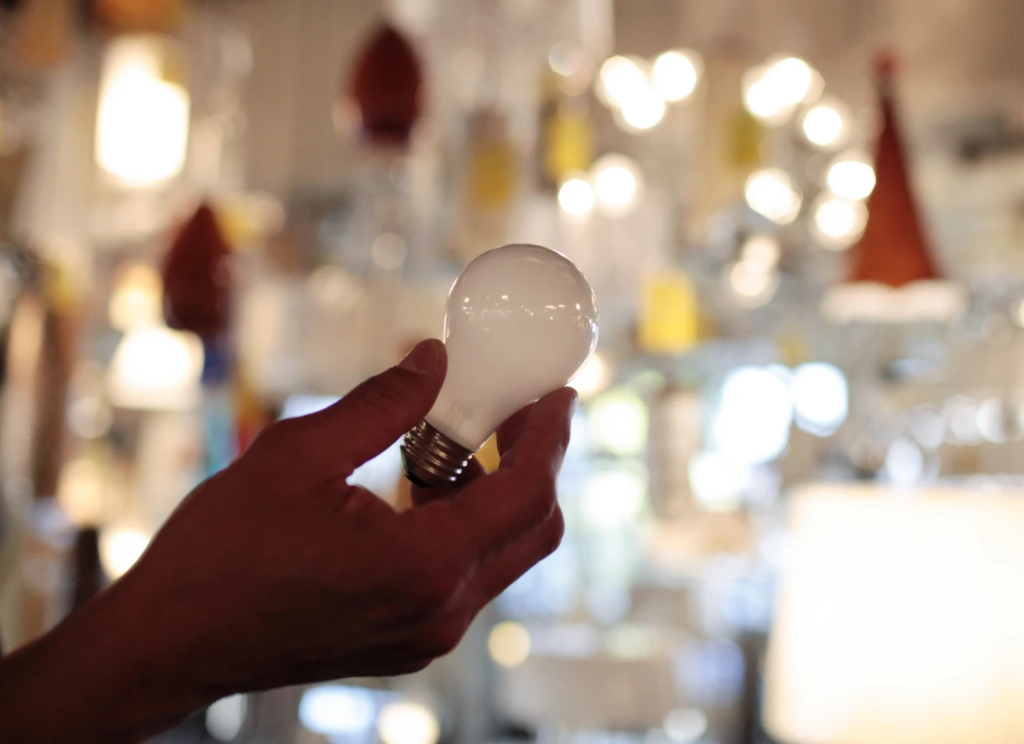Prepare to bid farewell to the once-familiar incandescent light bulb, originally pioneered by Thomas Edison over a century ago in San Francisco. The catalyst for this change is the recent enactment of federal energy efficiency regulations, which took full effect on Tuesday, and you may not have even noticed it happening.
These regulations, initially introduced during the Obama administration, have faced a turbulent journey through the realm of politics over the years. Conservatives and Republican lawmakers had vehemently opposed them, arguing that they infringed on consumer freedom and imposed excessive burdens on businesses. During the tenure of former President Donald Trump, these regulations were discarded in 2019. However, they were later revived by the Biden administration.
Interestingly, as August 1st approached, the chorus of criticism seemed to fade into the background. This change could be attributed to the fact that both companies and consumers have already begun to opt for more energy-efficient lighting solutions, showcasing their preference through their spending habits.
Key Information to Keep in Mind:
WHAT TRANSFORMS WITH THE NEW REGULATIONS? The new regulations introduce stringent efficiency criteria for light bulbs utilized in both residential and commercial settings. They also prohibit the production and distribution of bulbs that fail to meet these set standards. Traditional incandescent bulbs, rooted in an 1880 patent by Edison, are unable to satisfy these criteria. Similarly, halogen bulbs do not comply. Additionally, the rules extend to disallowing the import of less energy-efficient bulbs.
However, these mandates hold somewhat diminished significance compared to several years ago, primarily due to significant advancements in LED technology and production. These advancements have resulted in substantially reduced prices and enhanced overall quality. LED, an acronym for “light emitting diode,” represents a semiconductor device that directly converts electricity into light.
Between 2015 and 2020, there was a remarkable shift in American households’ lighting preferences. The percentage of households using LED bulbs for the majority or all of their lighting surged over tenfold, soaring from 4% to 47%, as indicated by data from the Energy Information Administration, an independent federal statistics agency.
Do I Need to Dispose of My Traditional Incandescent Bulbs? Fortunately, no action is required for the bulbs you currently possess. The regulations do not impact the bulbs already in your possession, and they also provide exemptions for specialized incandescent bulbs, such as those designed for ovens.
However, if you choose to replace your halogen and incandescent bulbs, it’s highly likely that opting for LED bulbs could result in substantial cost savings.
By reinforcing the ongoing shifts in the market, the Energy Department anticipates that American consumers could collectively save almost $3 billion on their annual utility bills due to these regulations. Additionally, the projection suggests that these rules have the potential to reduce carbon emissions by a significant 222 million metric tons over the next three decades.
Why Do LED Bulbs Offer Energy and Cost Savings?
Incandescent bulbs generate light by passing an electric current through a filament, heating it until it emits light. In Edison’s original design, a carbonized cotton thread served this purpose, whereas modern variants use tungsten filaments within an inert gas environment.
However, incandescent bulbs suffer from low efficiency. Only about 5% of the energy they consume is converted into light, with the remaining 95% dissipating as heat. This inefficiency is evident when you need to allow an incandescent bulb to cool before removing it.
Furthermore, their frequent burnouts necessitate replacement approximately every year.
In contrast, LED bulbs employ light-emitting components crafted using processes akin to those employed in manufacturing computer chips, resulting in exceptional efficiency. These bulbs produce minimal heat and consume up to 90% less energy than incandescent counterparts, while also boasting a significantly longer lifespan—up to 25 times longer—according to data from the Energy Department.

